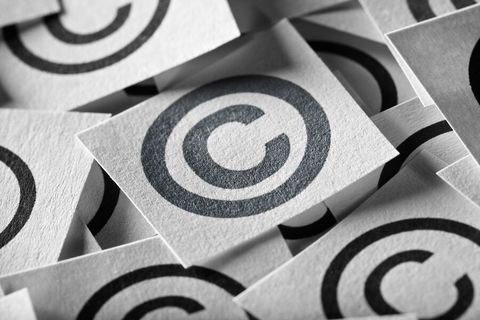Environmental Cleanup During A Pandemic – Q&A Summary of EPA’s Guidance
Client Alert | 4 min read | 04.13.20
On April 10, 2020, EPA released an interim guidance document on response field activities under CERCLA, RCRA, and other EPA response programs during the COVID-19 pandemic. Entitled “Interim Guidance on Site Field Work Decisions Due to Impacts of COVID-19,” the policy reflects a careful balance between the need to prevent exposure to environmental threats (such as a spreading groundwater plume that could contaminate drinking water supplies) and the need to avoid unnecessary risks associated with exposure to the coronavirus (such as routine sampling that could be postponed). The below Q&A addresses key aspects of the new interim guidance.
What activities and regulatory programs are subject to this interim guidance?
The interim guidance applies to response actions where EPA is the lead agency or has direct oversight, and includes actions under the Superfund program (CERCLA), RCRA corrective action, TSCA PCB cleanup provisions, the Oil Pollution Act, the Underground Storage Tank (UST) program, and any EPA emergency response activity.
What does the interim guidance suggest I do if state or local COVID-19 orders or other factors are going to delay performance of response action obligations?
For a party who is performing a response action pursuant to the terms of an enforcement document, such as a consent order, unilateral administrative order or other “enforcement instrument,” the party should review the language of that document to determine how to seek relief from performance of obligations due to the COVID-19 epidemic. Such instruments may include provisions allowing for adjustments to schedules to be made at the discretion of EPA’s project manager and/or pursuant to force majeure provisions, and may include directions on providing the requisite notice and other information to seek extensions or other relief. EPA states:
Modifications to a party’s performance obligations will be made on a case-by-case basis in accordance with the terms of the applicable enforcement instrument. The formal determination as to whether a particular situation constitutes force majeure or requires additional response depends on the site-specific circumstances, particularly the type of work that is affected by COVID-19. EPA expects to be able to make these determinations promptly.
EPA also notes that it “intends to be flexible on the timing of the notices” under force majeure provisions.
Under what circumstances would EPA be likely to grant an extension or other variance from performance obligations?
EPA lists the following examples of circumstances that may warrant response actions being reduced or suspended:
- State, tribal, or local health officials have requested particular site operations or types of operations that would pertain to particular sites be suspended.
- Any site workers have tested positive for or exhibited symptoms of COVID-19.
- Any sites where there may be close interaction with high risk groups or those under quarantine, such as work inside homes.
- Sites where contractor field personnel are not able to work due to state, tribal, or local travel restrictions or medical quarantine.
- Other sites where social distancing is not possible.
What factors will EPA consider in deciding whether to reduce or suspend response action obligations?
EPA’s list of factors regarding site-specific decisions that might justify suspension or reduction of work include the following:
- Whether failure to continue response actions would likely pose an imminent and substantial endangerment to human health or the environment, and whether it is practical to continue such actions.
- Emergency actions, Time Critical Removal Actions
- Sites with provisions of alternate drinking water supplies
- Site with ongoing on-site exposures to PCBs, lead, asbestos, and other COCs
- Sites with work to prevent harmful exposures, such as protection of drinking water sources from groundwater plumes and sensitive populations from vapor intrusion
- Whether maintaining any response actions would lead to a reduction in human health risk/exposure within the ensuing six months.
- Vapor intrusion
- Residential site work
- Drinking water work
- Whether work that would not provide near-term reduction in human health risk could be more strongly considered for delay, suspension, or rescheduling of site work, in coordination with state, tribal, and local officials and with updated HASPs as appropriate.
- Periodic monitoring
- Routine sampling during five year review
- Field sampling during RI/FS or RFI
- Active remediation of otherwise stable conditions
What work is EPA expecting to continue?
EPA also addresses work “performed away from sites,” and indicates its reasonable expectation that such work from remote workstations will continue:
- Investigation reports (including pre-NPL work)
- Modeling
- Negotiations between the parties
- Decision documents
- Cleanup documentation
- Workplans
- Progress reports
- Financial assurance obligations
EPA also recognizes that laboratories and other supporting operations for non-site work may be affected by COVID-19. Just as with site work, EPA advises parties to consult their enforcement instrument and engage with the agency on addressing these challenges.
* * * *
In sum, EPA offers a pragmatic and flexible approach to the many types of circumstances and challenges that the COVID-19 pandemic can present at cleanup sites across all of EPA’s response programs. Private parties should communicate and engage with EPA in a proactive and transparent way, with the applicable enforcement instrument providing the framework for that discussion. The interim guidance reflects what many parties have been experiencing the past several weeks – work that can be done safely will proceed, work that must be done to protect against imminent endangerment will proceed, and other work may be deferred.
The COVID-19 pandemic has triggered a dynamic, unprecedented, and rapidly changing environment for the regulated community. Parties should closely monitor changing conditions at and around cleanup sites, and stay in regular contact with EPA to ensure the continued safety of all who are affected by a site cleanup.
Contacts
Insights
Client Alert | 2 min read | 04.17.25
Will the Supreme Court review the Ninth Circuit’s unique Server Test for online copyright infringement? After the Ninth Circuit recently affirmed the Server Test, a photographer and copyright owner has requested certiorari. Petitioner-Plaintiff, Elliot McGucken, is a landscape photographer. Respondent-Defendant, Valnet, Inc., is the owner of a travel website located at “www.thetravel.com.” McGucken sued Valnet for copyright infringement when Valnet embedded on its site a number of links to McGucken’s Instagram posts. The district court, bound by the Ninth Circuit’s en banc decision in Perfect 10, granted Defendant’s motion to dismiss, finding that the Server Test foreclosed McGucken’s direct infringement claim as a matter of law, because Valnet linked to the images and did not store them on its own servers. The Ninth Circuit affirmed in a panel decision. McGucken now requests the Supreme Court to review the validity of the Server Test, which is unique to the Ninth Circuit.
Client Alert | 5 min read | 04.15.25
Is Section 230 Going to Change? The FTC, DOJ and FCC Signal Significant Change for Online Businesses
Client Alert | 4 min read | 04.14.25
Client Alert | 4 min read | 04.10.25
Hikma and Amici Curiae Ask Supreme Court to Revisit Induced Infringement by Generic “Skinny Labels”




